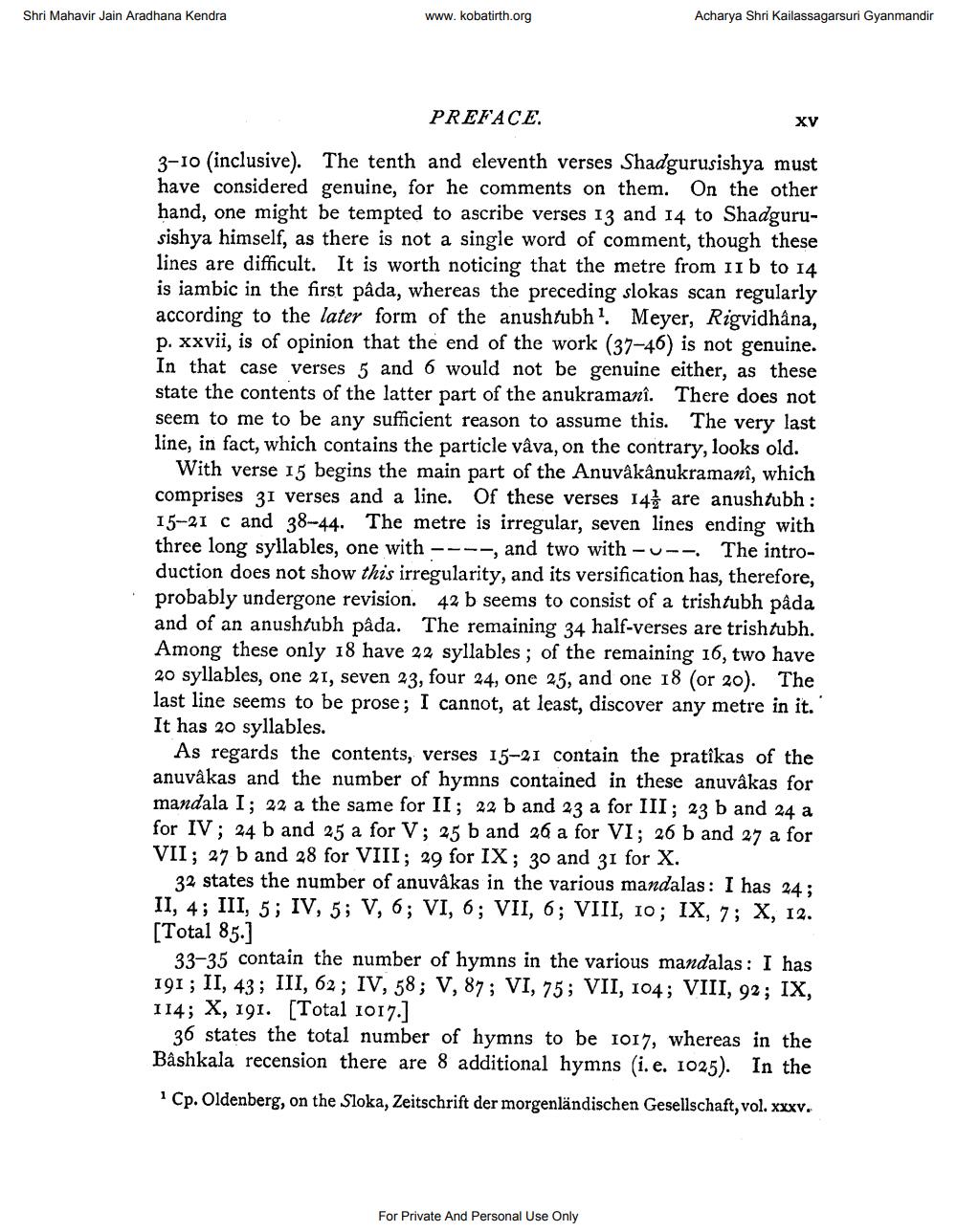________________
Shri Mahavir Jain Aradhana Kendra
www.kobatirth.org
Acharya Shri Kailassagarsuri Gyanmandir
PREFACE.
XV
3-10 (inclusive). The tenth and eleventh verses Shadgurusishya must have considered genuine, for he comments on them. On the other hand, one might be tempted to ascribe verses 13 and 14 to Shadgurusishya himself, as there is not a single word of comment, though these lines are difficult. It is worth noticing that the metre from u1b to 14 is iambic in the first pâda, whereas the preceding slokas scan regularly according to the later form of the anushtubhl. Meyer, Rigvidhana, p. xxvii, is of opinion that the end of the work (37-46) is not genuine. In that case verses 5 and 6 would not be genuine either, as these state the contents of the latter part of the anukramanî. There does not seem to me to be any sufficient reason to assume this. The very last line, in fact, which contains the particle vâva, on the contrary, looks old.
With verse 15 begins the main part of the Anuvâkânukramanî, which comprises 31 verses and a line. Of these verses 141 are anushtubh : 15-21 c and 38-44. The metre is irregular, seven lines ending with three long syllables, one with ----, and two with cu-- The introduction does not show this irregularity, and its versification has, therefore, probably undergone revision. 42 b seems to consist of a trishtubh pada and of an anushtubh pâda. The remaining 34 half-verses are trishtubh. Among these only 18 have 22 syllables; of the remaining 16, two have 20 syllables, one 21, seven 23, four 24, one 25, and one 18 (or 20). The last line seems to be prose; I cannot, at least, discover any metre in it. It has 20 syllables.
As regards the contents, verses 15-21 contain the pratikas of the anuvâkas and the number of hymns contained in these anuvâkas for mandala I; 22 a the same for II; 22 b and 23 a for III; 23 b and 24 a for IV; 24 b and 25 a for V; 25 b and 26 a for VI; 26 b and 27 a for VII; 27 b and 28 for VIII; 29 for IX; 30 and 31 for X.
32 states the number of anuvâkas in the various mandalas: I has 24; II, 4; III, 5; IV, 5; V, 6; VI, 6; VII, 6; VIII, 10; IX, 7; X, 12. [Total 85.]
33-35 contain the number of hymns in the various mandalas: I has 191; II, 43; III, 62; IV, 58; V, 87; VI, 75; VII, 104; VIII, 92; IX, 114; X, 191. [Total 1017.]
36 states the total number of hymns to be 1017, whereas in the Bâshkala recension there are 8 additional hymns (i.e. 1025). In the
Cp. Oldenberg, on the Sloka, Zeitschrift der morgenländischen Gesellschaft, vol. xxxv.
For Private And Personal Use Only




